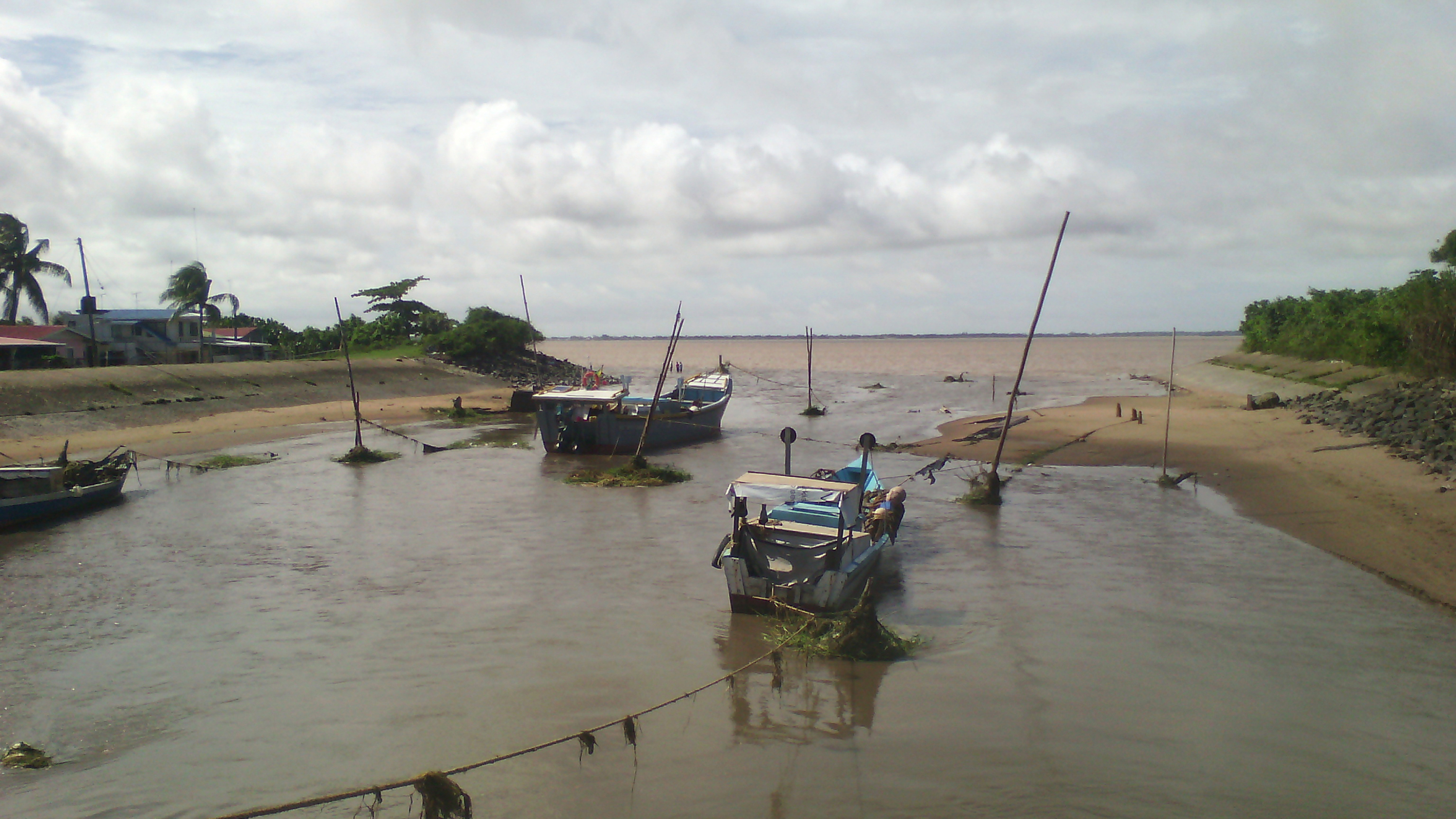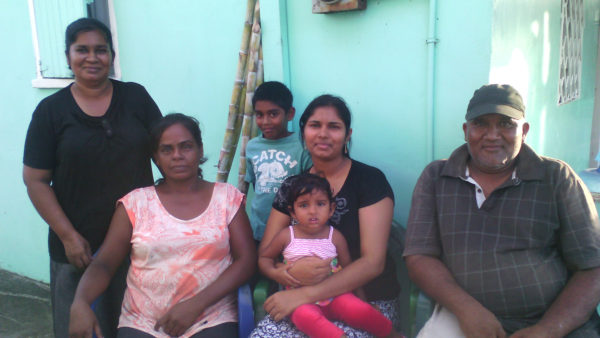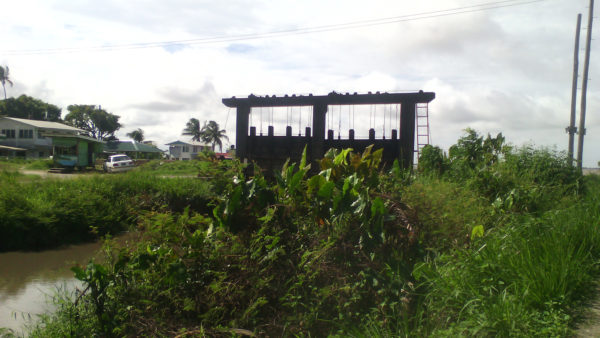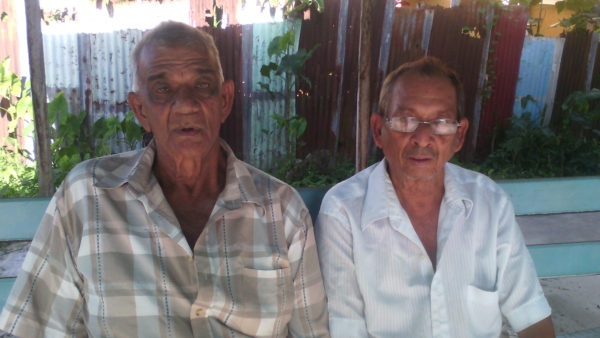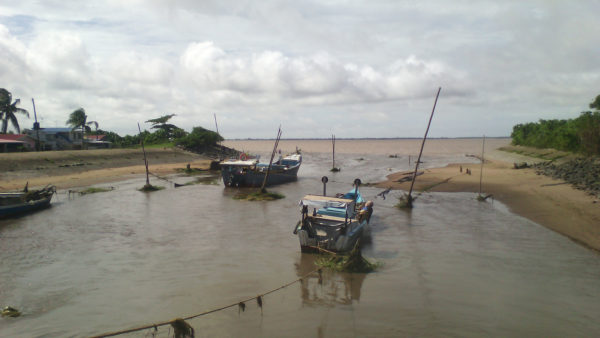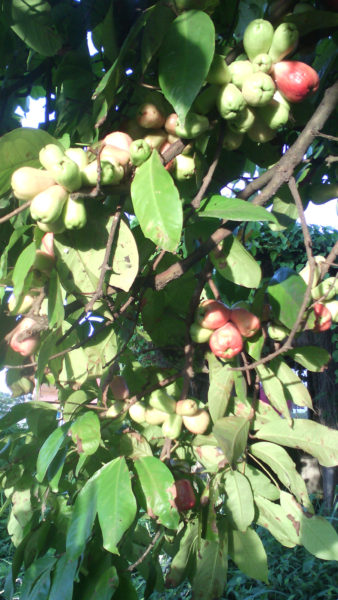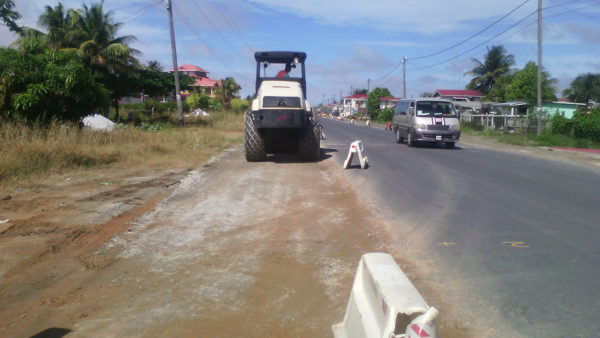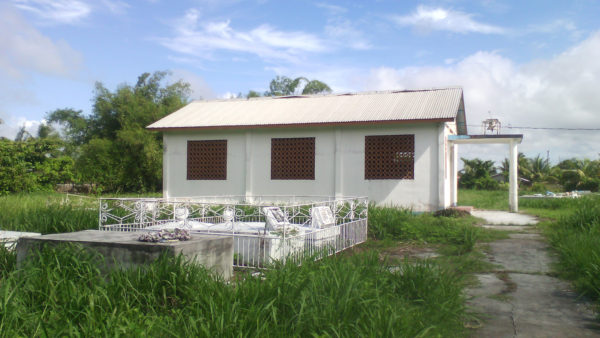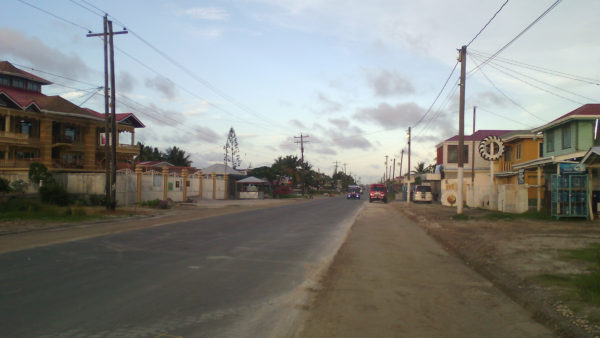Good Hope is a tiny village on the East Bank Essequibo pressed between Greenwich Park and Ruby. It has approximately 200 residents.
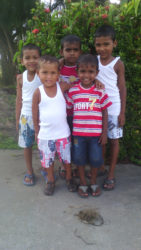
The village is some 30 to 45 minutes from Vreed-en-Hoop depending on the traffic and ten minutes from Parika.
On approach, the village appears serene like any other around Guyana, but its people are still devastated by the deaths of Mohamed and Jamilla Munir who were burnt alive after their house was broken into and then set alight by bandits. But though fearful and angry, villagers are trying to carry on with their daily lives.
At the time the World Beyond Georgetown visited, road works were in full swing. Workers were setting up plastic road blocks to prevent vehicles from using the parts of the road being worked on.
At the koker separating Good Hope from Ruby, moored boats rocked on the Essequibo waters and out in the giant river fishermen were hard at work.
Through a back street called Old Road, we found Ashraf Ally and his neighbour Dhanook Singh.
Ally, originally from Leguan lived in the interior as well having worked there for 32 years before settling in Good Hope almost 18 years ago. He is now a pensioner who lives with his wife and son.
According to the man, moving here was an advantage for him since he had easier access to transportation and he was also closer to his daughter who lives in the same village.
The whistling and tweets of birds filled the air around us and frogs croaked loudly in the drain in Ally’s yard, almost overriding sounds of the birds.
He pointed to some mango trees in a lot oblique to his saying it was rumoured that they’re over 100 years old.
Meanwhile, Singh said he moved from Coverden on the East Bank Demerara and settled in Parika after he found his “dulahin” on this side. He operated a tyre-shop in Parika and when he moved to Good Hope ten years ago he still travelled every day to see about his business until recently, when he fell ill. Now he’s confined to home. He tries to check out his neighbours every now and again.
Singh said the Old Road where they live was once the public road before the current one was built. The public road is often referred to by the villagers as the highway.
“After they build the highway they breakup this one and people fetch in the road brick by brick to full up them yards. All here was sheer swamp and bush,” Singh said.
Singh was the one to clear up the error of the area being called West Coast. “This is actually East Bank Essequibo. Most people call it West Coast but in the bills here is [addressed as] Old Road, East Bank Essequibo. People who collecting transport for them land does got to go to Suddie on the Essequibo Coast.”
Nearby is a church with tombs of its past members in the churchyard. Singh said the church was rumoured to have been built by the Dutch, but he did not know much more about it except that it’s one of the few churches of its kind remaining in Guyana.
The view of the Essequibo River and Leguan he said can be seen from his house through the clearing on the seawall.
Although he’s bothered by petty crimes and has to keep an eye out since a few of his chickens went missing, he said that what happened with the Munirs was something never seen in his village. Good Hope, he said, was a relatively peaceful and friendly village.
Just down the road, five little mischievous boys were hunting through a resident’s flowering plant growing along the road for birds’ nests, but when they did find one it was empty. That however didn’t discourage them from rampaging through looking for another. When asked why they wanted it, one of the boys said, with a cunning smile, that they were going to cook the bird and its eggs. But before they could continue their mothers caught up with them and the search was discontinued.
Sabrina Persaud was rocking her baby girl in the hammock when we got to talking. She has only been living in Good Hope for about a decade or so.
Persaud said when she first moved there she found the place to be strange and was missing her home, Sparta, on the Essequibo Coast, but in time she felt right at home.
The village has only a church and a mosque so on occasions she visits the mandir in the nearby Greenwich Park.
Persaud said she’s still shaken by the Munirs’ fate like the rest of Good Hope and lives in fear because of it. On the night of the fire, she said, she was awakened by a phone call from a neighbour who told her about the fire, but it wasn’t until morning that she learnt about how deadly it was and what led up to it.
According to Persaud she’s come to love the village, but wishes they could be provided with more street lights.
“Good Hope is a very quiet place. Nobody does quarrel and fight with each other,” Mellana Khusial said.
“When I came here I meet friendly people. They have always been nice to me,” she said
Her groceries are bought from the shops around but she travels to Parika to buy vegetables or sometimes purchases from the little boys who come pedalling down the road from Greenwhich Park.
The village has no school and the two youngest of her five children attend Greenwich Park Primary and Zeeburg Secondary schools.
“Living here you find yourself among good people. You won’t find people drinking. Most people here religious,” she said.
The woman, a newspaper vendor for the four major publications said she never one day thought she’d be reading the headlines of her neighbours’ demise in the papers. As we talked relatives of the Munirs’ were cleaning up around the house while some stood looking around still dazed and trying to make sense of all that transpired.
“Before the fire they were hollering for help and saying that bandits in the house. We were too afraid to come out of the house because we don’t know if they [bandits] arm so we start making calls. We call a police who live not far away. Then my son holler and say ‘fire in the house’ and by the time we reach downstairs the fire done cover the entire house. All we could do was watch the windows blow out and the zinc fly off. I can’t remember them screaming during the fire,” the distraught woman recounted.
Khusial has video footage of the fire on her phone of the house completely engulfed in flames and zinc sheets flying off. In the video, a fireman stood on the road complaining to another that he didn’t have water while one said to try the drains; at present, the drains are almost dried up.
She showed also a photo of a Koran with its edges barely burnt which was posted on Facebook and is said to be the only thing that was salvaged from the fire.
Another resident who was visiting Khusial, but wishes to remain anonymous said she married and moved there 24 years ago and had never heard anything like it. According to the woman she and other villagers are enduring sleepless nights since the tragedy. At night, any sound has her at her windows peeking. The villagers she said are now locking up early once the place becomes dark.
She too is requesting more street lights and hopes that they would have a policing group set up soon.
Khusial said every night she goes to bed and lies there with thoughts running through her mind about what the Munirs would have gone through before their deaths. The yard, she noted, was surrounded by flowers and she didn’t see anybody leave the premises. “Sometimes my friends Whatsapping me to tell me about a vehicle that slow down or that a dog barking. That’s how we living now. We scared for our lives,” she said.
In the lot nearby is an incomplete concrete structure in which a senile man stays. The structure is overrun by bushes. Khusial said she weeded the grass a few times but she wanted the owner to keep it clear of weeds since the lot could be harbouring more than just dangerous snakes.
Khusial said she wishes fire trucks can be more prepared for situations like these although at the same time the building was engulfed so quickly she doesn’t think they could have done anything.
Villagers hope for the best and to see justice meted out once the perpetrators are found and that their lives can return to some sort of normalcy.
